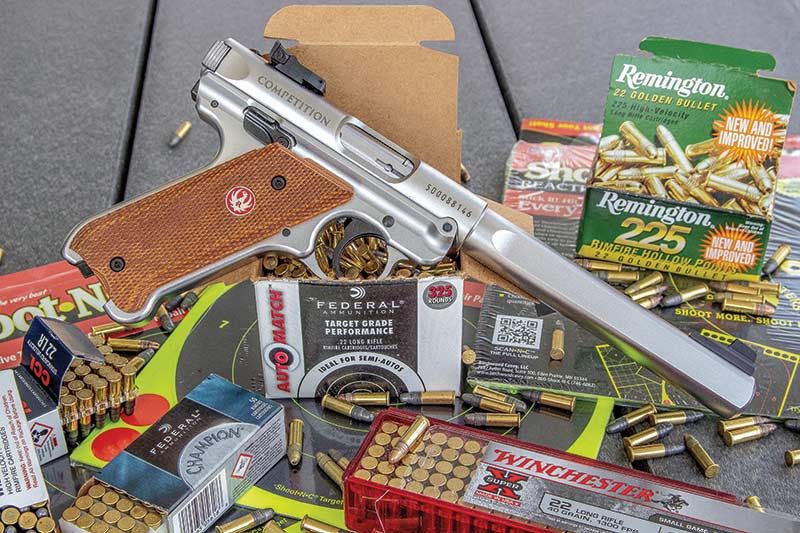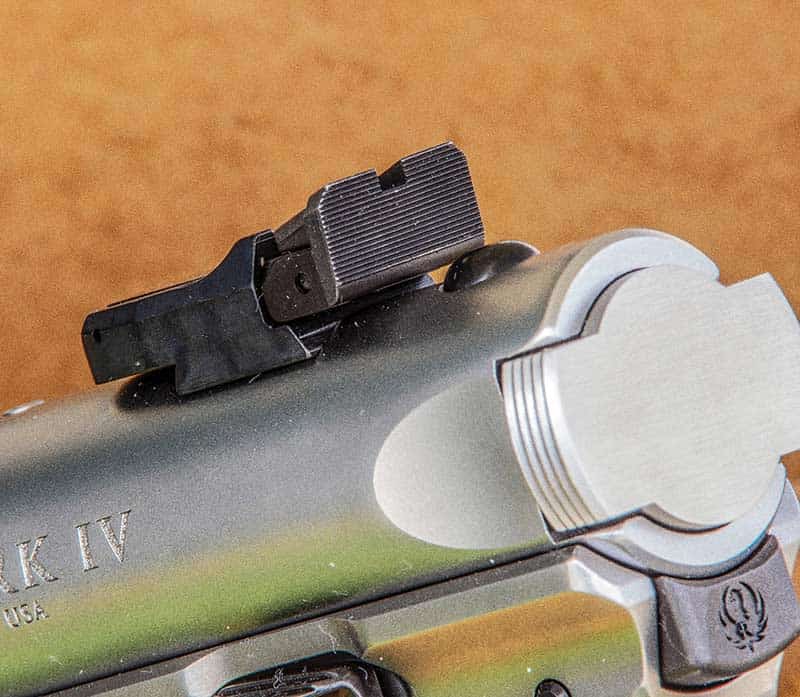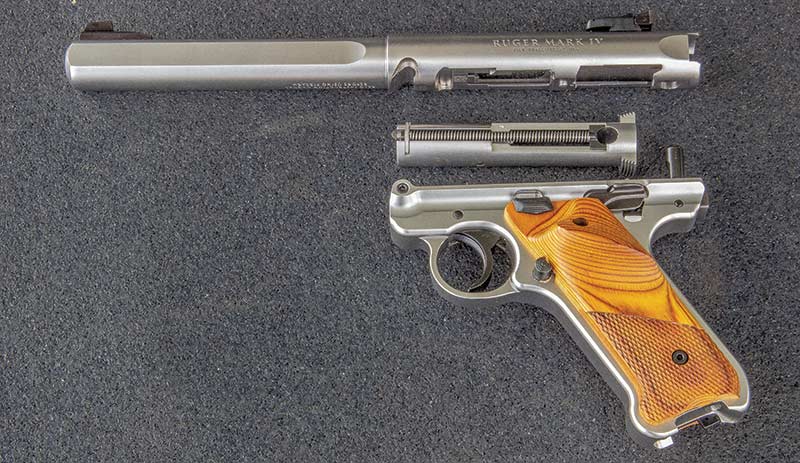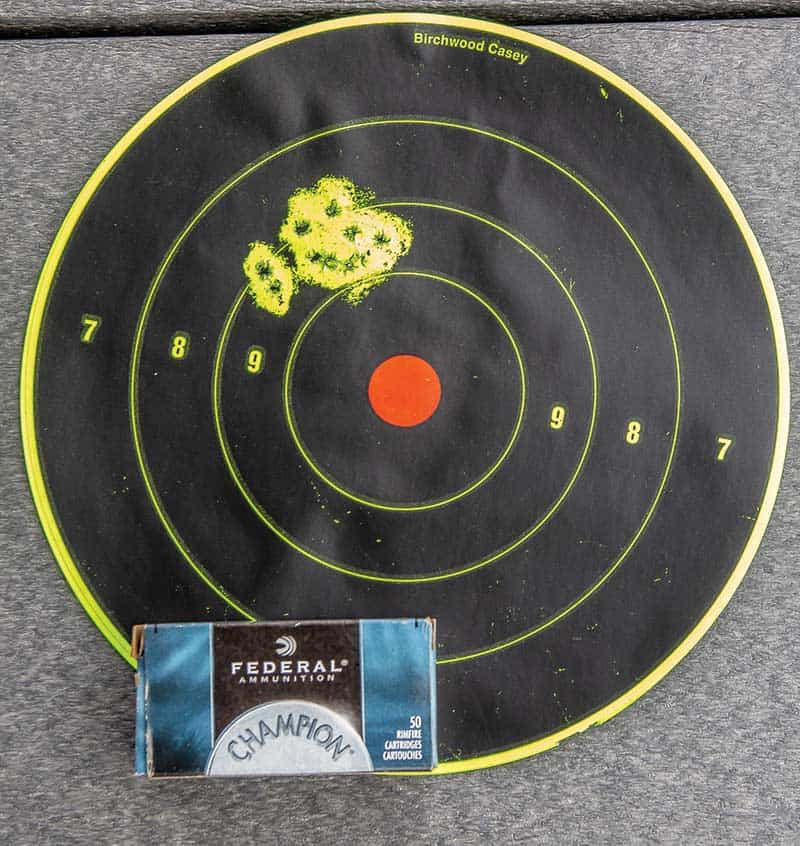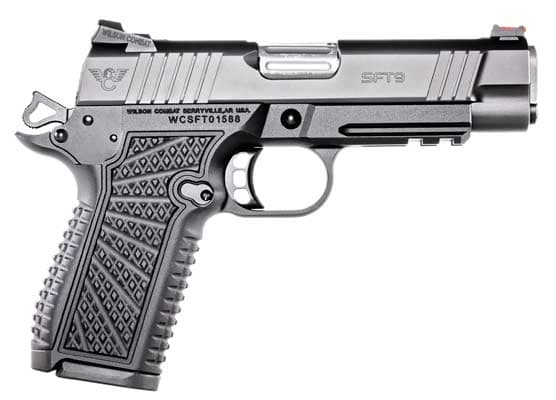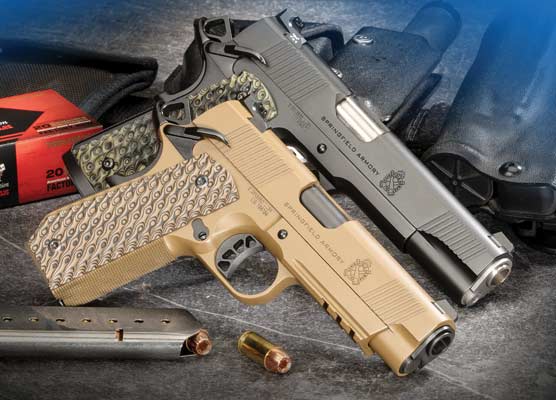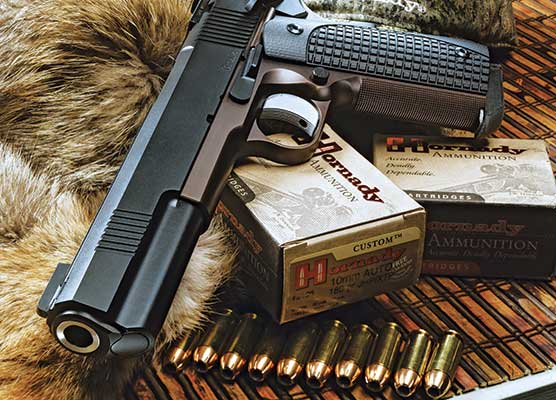Ruger Mark IV Competition Pistol
I’ve not had a lot of experience with Ruger .22 pistols so I jumped at the chance to spend a little quality time with Ruger’s Mark IV Competition, built for folks who are serious about rimfire match pistols.
The pistol traces its lineage all the way back to 1949 and Bill Ruger’s original Standard Model .22. Over the years, the gun has gone through various major numbered-series makeovers and improvements until the Mark IV was unveiled in 2016.
Mark IVs come in several flavors, even a “Tactical” model and the well-loved Target version (frequently customized). Last year, Ruger decided to up the ante and build a new top-of-the-line Competition version.
Specs
Weighing in at a stout 46 oz. (vs. 36 oz. for the Target model), it certainly has real-deal heft. Utilizing a cast rather than stamped frame, the fit and finish of the satin-stainless piece is almost flawless and reinforces the feeling of a quality tool rather than “just” a .22.
The Mark IV series features a one-button takedown system, alleviating the significant maintenance headaches of earlier Ruger pistols. With the Mark IV, you push a button underneath the rear bolt and the entire upper assembly swivels on a hinged connection at the front of the frame, much like an AR. From there, the bolt pulls free for cleaning. To reassemble, you simply reverse the process, pivoting the upper into the lower until you hear a click.
The Competition features a distinctive slab-sided 6.88″ barrel (1:16 twist) nicely target-crowned at the muzzle. The barrel/receiver assembly is pre-drilled and tapped to mount a Weaver or Picatinny rail for optics, probably one of the first customizations a competitive shooter would likely undertake.
The factory sights are, well, sights. The front is a large black blade while the rear is a straightforward micro-adjustable. The irons are certainly adequate — good for a broad range of tasks but great at none. Once again, this model is geared for competitors and other inveterate tinkerers, so it would appear Ruger chose a good, basic set of sights knowing most serious end-users would likely add optics — or at least change out the standard equipment.
The stocks are laminated wood and feature sharp checkering along with the red Ruger medallion. Most noteworthy is the prominent thumb shelf on the left panel. This makes the gun almost impossible for a southpaw shooter to properly grip out of the box, so if you’re a lefty, aftermarket stocks would be a necessity — a mildly surprising design choice for a gun featuring an ambidextrous thumb safety. For a right-hander, the panel does provide a nice place to rest your thumb (though I didn’t use it as such).
The trigger was crisp, with no noticeable creep and a clean break, but fairly heavy overall for a “target” gun; unfortunately, our trigger scale decided to go on the blink so I have no way of determining poundage. Using my own Mark I Experienced Finger I’d estimate it in the 4-to-5 lb. range Fortunately, there are many gunsmiths across the country who can work magic on the Ruger pistol trigger assembly — again, another common practice for the competitive shooter.
Rangework
We fired the gun with every type of .22 ammo on hand, all adding up to 10 different brands and upwards of 600 shots. After an afternoon of shooting (and the accidental killing of one of our “good” sandbags), the gun consistently favored standard velocity RN ammo.
The best performance was turned in by the 40-gr. Federal Champion while the second best — somewhat surprisingly — was from an old but unopened box of 40-gr. Winchester Wildcat ammo.
Rather than shoot standard 3- or 5-round bragging groups, the fully loaded 10-round Mark IV magazine simply begged for all the lead to go downrange in one sitting, so I obliged. At 25 yards from a sandbag rest on a windy day, the best 10-round group I could muster was just over 1.5″. Not too shabby, but probably beneath the capabilities of the gun in better circumstances and with some type of optical sight.
Ultimately, if you’re looking for an uber high-quality .22 pistol for hunting, casual matches or to serve as the basic canvas for building a “serious” competition rod, you can’t go wrong picking up the Ruger Mark IV Competition. The MSRP is $749.
